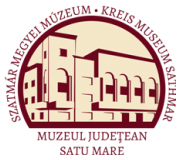Marcu-Istrate, Daniela - Rusu, Adrian Andrei - Szőcs Péter Levente (szerk.): Arhitectura religioasă medievală din Transilvania 3. (Satu Mare, 2004)
Emődi Tamás, Lángi József: A síteri református templom építészettörténeti és falkép-restaurátori kutatása
are known at the present. The lower part of the second layer of frescoes represents a wave-edged drapery, ended with a richly decorated fillet, and it can be found all over round in the sanctuary. Above of this drapery, this period of frescoes has figurai scenes. On the northern side of the triumphal arch, toward the sanctuary, the figure of an imploring rich man can be seen, holding a cartouche in his hands. This is a fragment from three narrative scenes on the story of the poor Lazarus, depicted on the walls of the sanctuary. Other pictures, representing the tortures of the martyrs ’ (Antipas or Saint Eustachian, the Fourteen Helping Saints, etc.), are known only from Römer ’s description - they were not uncovered during our research. Among the frescoes of the nave, only one fragment of a saint figure, perhaps Archangel Saint Michael - described already by Lugossy - was identified on the northern side of the triumphal arch. On the southern side of the arch, a very important scene was found: the full figure of Saint Mauritius, which was not mentioned before by any scholar. The identification is unambiguous, due to his written name in capital letters, above the figure of the saint: S. MA VRICIUS. During a new research, in July of 2004, the surviving details of an altar canopy were found in the corner between the triumphal arch and the southern wall of the early nave. This was decorated with the Maiestas Domini and six figures of the Apostles. They are contemporary with the second period of the mural decoration of the sanctuary. Summing up the research, it is obvious, that the frescoes from Siter consits one of the most important group of medieval mural paintings from the low-lands region of the medieval Hungarian Kingdom (Alföld). The architectural reconstruction of the church and the restoration of its outstanding painted decoration with great iconographical value would be a significant achievement of the protection of the common cultural heritage. A sítéri református templom kutatása 225
